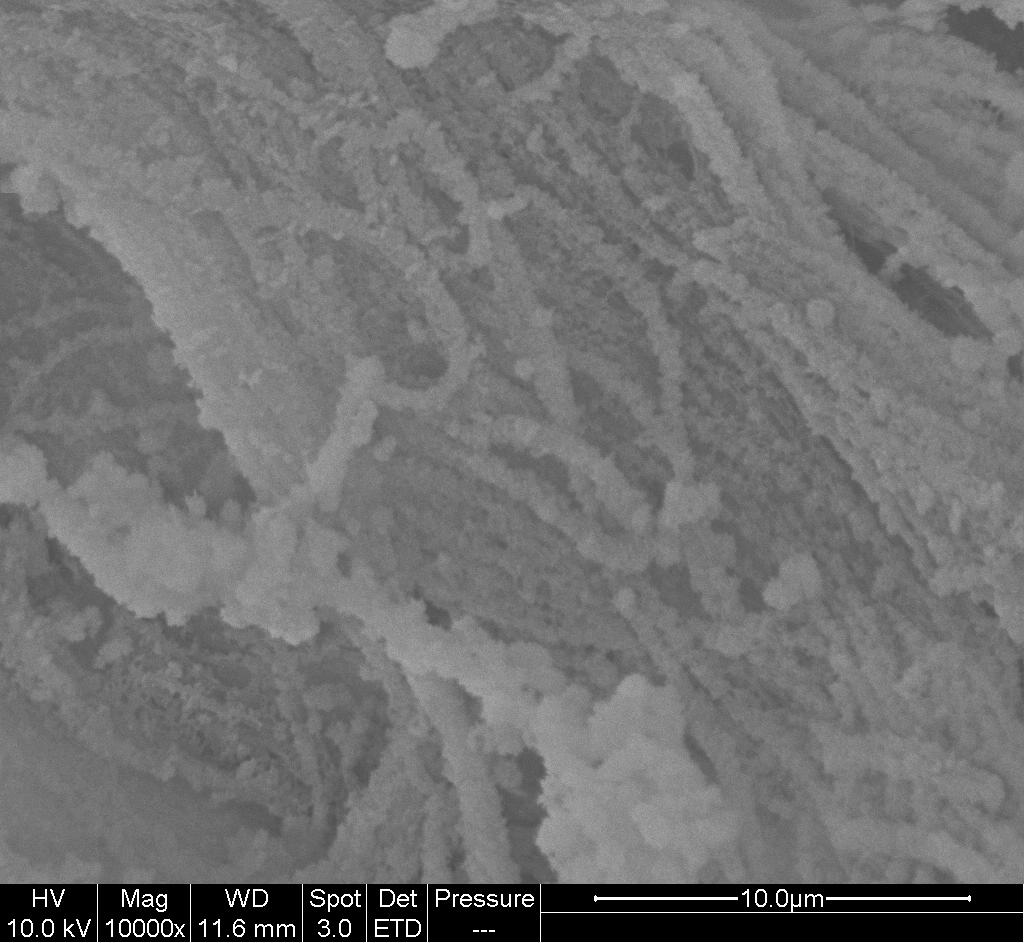▼ Reference
- Andiappan M, Sundaramoorthy S, Panda N, Meiyazhaban G, Winfred S B, Venkataraman G, Krishna P. Electrospun eri silk fibroin scaffold coated with hydroxyapatite for bone tissue engineering applications. Progress in Biomaterials 2013; 2:6. Open Access
- Bao XX, Teramoto A, Abe K. Fabrication and characterization of electrospun chitosan/poly(L-lactic acid) nano/micro fibers as a scaffold for bone regeneration. Journal of Materials Science and Engineering with Advanced Technology 2010; 2: 113
- Ekaputra A K, Zhou Y, Cool S M, Hutmacher D W. Composite Electrospun Scaffolds for Engineering Tubular Bone Grafts. Tissue Engineering 2009; 15: 3779.
- Haider A, Gupta K C, Kang I K. Morphological Effects of HA on the Cell Compatibility of Electrospun HA/PLGA composite Nanofiber Scaffolds. BioMed Research International 2014 Article in Press Open Access
- Jose M V, Thomas V, Johnson K T, Dean D R, Nyairo E. Aligned PLGA/HA nanofibrous nanocomposite scaffolds for bone tissue engineering. Acta Biomaterialia 2009; 5: 305.
- Kashte S, Arbade G, Sharma R K, Kadam S. Herbally Painted Biofunctional Scaffolds with Improved Osteoinductivity for Bone Tissue Engineering", Journal of Biomimetics, Biomaterials and Biomedical Engineering 2019; 41: 68.
- Kim H W, Song J H, Kim H E. Nanofiber Generation of Gelatin-Hydroxyapatite Biomimetics for Guided Tissue Regeneration. Adv. Func. Mater. 2005; 15: 1988.
- Kim H W, Song J H, Kim H E. Bioactive glass nanofiber-collagen nanocomposite as a novel bone regeneration matrix. J Biomed Mater. Res. 2006; 79A: 698.
- Lee S H, Jeon S, Qu X, Kang M S, Lee J H, Han D W, Hong S W. Ternary MXene-loaded PLCL/collagen nanofibrous scaffolds that promote spontaneous osteogenic differentiation. Nano Convergence 2022; 9: 38. Open Access
- Li C, Vepari C, Jin H J, Kim H J, Kaplan D L. Electrospun silk-BMP-2 scaffolds for bone tissue engineering. Biomaterials 2006; 27: 3115.
- Meng Z X, Li H F, Sun Z Z, Zheng W, Zheng Y F. Fabrication of mineralized electrospun PLGA and PLGA/gelatin nanofibers and their potential in bone tissue engineering. Materials Science and Engineering C 2013; 33: 699.
- Martins A, Chung S, Pedro A J, Sousa R A, Marques A P, Reis R L, Neves N M. Hierarchical starch-based fibrous scaffold for bone tissue engineering applications. J Tissue Eng Regen Med 2009; 3: 37.
- Ngiam M, Liao S, Patil A J, Chen Z, Yang F, Gubler M J, Ramakrishna S, Chan C K. Fabrication of Mineralized Polymeric Nanofibrous Composites for Bone Graft Materials. Tissue Engineering Part A 2009; 15: 535.
- Phipps MC, Clem WC, Catledge SA, Xu Y, Hennessy KM, Thomas V, Jablonsky M J, Chowdhury S, Stanishevsku A V, Vohra Y K, Bellis S L. Mesenchymal Stem Cell Responses to Bone-Mimetic Electrospun Matrices Composed of Polycaprolactone, Collagen I and Nanoparticulate Hydroxyapatite. PLoS ONE 2011; 6(2): e16813. doi:10.1371/journal.pone.0016813 Open Access
- Polini A, Pisignano D, Parodi M, Quarto R, Scaglione S. Osteoinduction of Human Mesenchymal Stem Cells by Bioactive Composite Scaffolds without Supplemental Osteogenic Growth Factors. PLoS ONE (2011); 6(10): e26211. doi:10.1371/journal.pone.0026211 Open Access
- Polineni V, Chen C S, Chin W C, Gadre A. Functionalized Nanoscaffolds to Promote Osteogenic Differentiation in Adipose Derived Human Mesenchymal Stem Cells. Int J Stem Cell Res Ther 2014; 1:1 Open Access
- Prabhakaran M P, Venugopal J, Ramakrishna S. Electrospun nanostructured scaffolds for bone tissue engineering. Acta Biomaterialia 2009; 5: 2884.
- Ruckh T T, Kumar K, Kipper M J, Popat K C. Osteogenic differentiation of bone marrow stromal cells on poly(e-caprolactone) nanofiber scaffolds. Acta Biomaterialia 2010; 6: 2949.
- Ruckh T T, Carroll D A, Weaver J R, Popat K C. Mineralization Content Alters Osteogenic Responses of Bone Marrow Stromal Cells on Hydroxyapatite/Polycaprolactone Composite Nanofiber Scaffolds. J. Func. Biomater. 2012; 3: 776. Open Access
- Shabestani N, Mousazadeh H, Shayegh F, Gholami S, Mota A, Zarghami N. Osteogenic differentiation of adipose-derived stem cells on dihydroartemisinin electrospun nanofibers. J Biol Eng 2022; 16: 15. Open Access
- Sui G, Yang X, Mei F, Hu X, Chen G, Deng X, Ryu S. Poly-L-lactic acid/hydroxyapatite hybrid membrane for bone tissue regeneration. J. Biomed. Mater. Res. 2007; 82A: 445.
- Tuzlakoglu K, Santos M I, Neves N, Reis R L. Design of Nano- and Microfiber Combined Scaffolds by Electrospinning of Collagen onto Starch-Based Fiber Meshes: A Man-Made Equivalent of Natural Extracellular Matrix. Tissue Engineering Part A 2011; 17: 463.
- Venugopal J, Vadgama P, Kumar T S S, Ramakrishna S. Biocomposite nanofibres and osteoblasts for bone tissue engineering. Nanotechnology 2007; 18: 055101.
- Wang J, Valmikinathan C M, Liu W, Laurencin C T, Yu X. Spiral-structured, nanofibrous, 3D scaffolds for bone tissue engineering. J. Biomed. Mater. Res. 2010; 93A: 753.
- Yoshimoto H, Shin Y M, Terai H, Vacanti J P. A biodegradable nanofiber scaffold by electrospinning and its potential for bone tissue engineering. Biomaterials 2003; 24: 2077.
▼ Credit and Acknowledgement
Author
Wee-Eong TEO View profile
Email: weeeong@yahoo.com
 ElectrospinTech
ElectrospinTech

